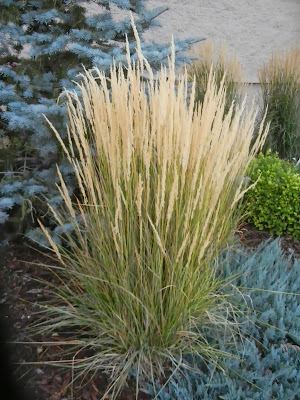Growing Pumpkins for Jack-o-Lanterns

I know it's too late to grow pumpkins for Halloween this year, but now is the time of year we think about them, so here are a few tips on growing good pumpkins for Jack-o-lanterns. Keep them in mind for your garden next year. 1. Pick the right seed Some varieties of pumpkins are better for cooking. They tend to be smaller with thicker flesh. Other varieties are better for carving. They tend to be larger with thinner flesh. Not that you can't cook a carving pumpkin or carve a cooking pumpkin, it's just that choosing the right variety makes what you intend to do with the pumpkin easier. Read the seed packages to determine what kind of pumpkin it is. 2. Plant in the right spot Pumpkins like a lot of sun and plenty of room. I plant mine next to the corn. The pumpkin vines are able to spread through the corn. An added benefit is that critters like raccoons and skunks don't like walking ...

.jpg)

